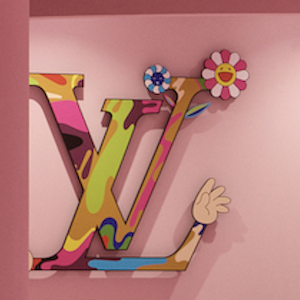Love Fashion; Subversive, Dynamic, Tribal and Life Changing
By Chiara Orsi
How can it be that someone, just by wearing something, can make an actual change in society? Probably because they’re not the only ones, maybe just a handful of others are taking similar outrageous steps and together they start a ‘tribe’. Communities are usually formed around similar ideologies and shared values, in the same way, fashion tribes follow a unique aesthetic and style. These groups are capable of exercising considerable subversive power not only within the fashion industry but also within society as a whole. The subversive power of fashion tribes lies in their boldness to challenge mainstream and traditional fashion conventions, pushing boundaries, tearing down establishments, provoking thoughts and inspiring change. In this way, fashion tribes can challenge dominant ideologies, redefining the norms of ‘acceptable’ and ‘fashionable’. Find out more in Love Fashion; Subversive, Dynamic, Tribal and Life-Changing.
“It was a really revolutionary time. It felt like you had this naive idea that you could change things just by wearing something”
Boy George
Far from designers that were catapulted from college to stardom, back in the mid-‘80s London, the hot spot for fashion renegades was the Taboo, a tiny nightclub located in the corner of Leicester Square, “where the anarchic energy of the night slit over into experimental creativity of the day”.
The legendary Taboo’s dance floor welcomed the Londoner squat life, made up of alternative designers, photographers, filmmakers, artists and performance artists, all united by visions out-of-the-ordinary and creativity considered ‘outrageous’. Indeed, a great part of the scene was made by young people from the working classes, and art and fashion students unified by their emboldened rebellious attitudes and personality.
© Michael Costiff
Notable personalities such as Leigh Bowery, Trojan, David Cabaret, Adel Roostein and Sue Tilley, regulars at the club and their provocative and revolutionary energy was expressed through radical designs fearlessly alternative, that was influenced by earlier movements, such as the punk and the glam rock, and that drew inspiration from subcultures, such as Goth and Rockabilly, to mix and reinvent them.
This movement became the New Romantics eventually, but this one club that went on for only a short time influenced way beyond its own boundaries.
The resonance of the ‘Taboo’s Fashion Tribe’ was such that in 1983 Susanne Bartsch, enamored with the London scene and the nightclub’s vibrant energy, brought it to New York City, ‘creating a sensation in her Roxy Roller Rink fashion show’. Not only Taboo’s creativity was brought abroad, but it also attracted media interest from the new ‘style titles’ magazines such as The Face and I-D and pop stars scouted at the club that were widening the audience and raising interest around the clothes.
In addition to the subversive element, Taboo pushed the boundaries of fashion and gender, focusing on the radical mixing up of gender stereotypes and making a marker in LGBT history. Indeed, ‘many of the clothes were non-conforming, provocative or gender neutral from a girl in a tailored jacket styled with a pair of men’s Y fronts to a man in skin-tight patterned leggings styled with a bomber jacket and Doctor Martens’.
© Derek Ridgers, co Unravel Productions
Another element of innovation was brought by the ingenious use and reuse of salvaged materials, recycled fabrics and found objects, probably due to squat life conditions, but still subversive, compared to mainstream glossy materialism of the 1980s yuppie: This powerful underground counterculture.
In conclusion, despite the Taboo aesthetic not appearing on runways, as such, yet its influence was seen indirectly via designers of the time or near future, like John Galliano and Jean-Paul Gaultier even names no longer known as Culture Shock and John Moore. It was hugely influential because of this ‘progressive, gender-queer, nightclub look that continues to influence contemporary style from streetwear to the work of contemporary designers such as Charles Jeffrey, Matty Bovan and Gareth Pugh’.
Aimed at giving the Taboo aesthetic a greater relief, the book ‘Outlaws Fashion Renegades of 1980s London ‘pays homage to the boundary-pushing fashion and styling that defined London’s vibrant 1980s club scene’, enhancing the anarchic and bold energy of Leigh Bowery and the fashion renegades, pioneers of this avant-garde movement.
Book Cover RGB
In addition, located in London, the ‘Fashion and Textile Museum’ is committed to the presentation of exhibitions enhancing this fashion movement, presenting several original pieces displayed in the Taboo nightclub location reproduced accurately to create an immersive experience for spectators that brings them back to the ‘80s. Alongside the permanent collection, as part of the Museum’s program, are often presented temporary exhibitions, educational courses, talks, events, and workshops that display innovative fashion and textiles from designers from all over the world.
Conclusively, launching this September, ‘The Book’ is a new publication that ‘transcends the conventional boundaries of fashion, culture, design, travel, and lifestyle’. In line with the concept of tribes, ‘The Book’ by Matthew combines different genres and topics into a series of narratives reflecting contemporary human culture.
The main concept behind ‘The Book’ is the limitless and boundless exploration, championing diversity and inclusivity, ensuring that no idea is overlooked and free from judgements and constraint.
“With The Book, we aim to create a space where people feel free to express themselves and explore new horizons,” says Matthew. “It’s about fostering a community that celebrates the richness of human creativity and the beauty of diverse perspectives.”
‘By Matthew’
This iconic publication has also been realised in partnership with Dior, Carpenters Workshop Gallery, Amalie Gassmann and Patrick Mcdowell, to name a few, and is destined to become a cherished piece in the collections of art and fashion enthusiasts worldwide.
Outlaws and Renegades of Fashion at the Fashion and Textile Museum at 83 Bermondsey Street, London, SE1 3XF, Tuesdays – Saturdays, 11.00 – 18.00. Tickets: £12.65 Tickets available to book at: fashiontextilemuseum.org
‘By Matthew’ launches ‘The Book’. For more information please visit bymatthew.com
If you enjoyed reading Love Fashion; Subversive, Dynamic, Tribal and Life Changing why not try The Fashion Side of the Olympics and Love London, It’s a Fashion City.
.Cent Magazine London, Be Inspired; Get Involved









